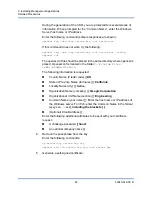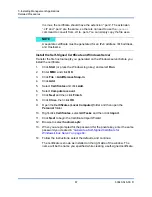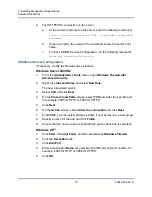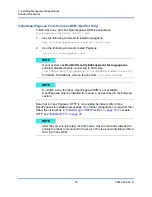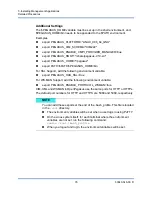
7–Installing Management Applications
Detailed Procedures
71
83840-546-00 D
Useful WinRM Commands
lists some useful WinRM commands.
Useful WinRM Websites
http://msdn.microsoft.com/en-us/library/aa384372%28v=vs.85%29.aspx
http://support.microsoft.com/kb/968929
http://support.microsoft.com/kb/2019527
http://technet.microsoft.com/en-us/library/cc782312%28WS.10%29.aspx
http://msdn.microsoft.com/en-us/library/aa384295%28v=VS.85%29.aspx
WS-MAN—Windows Client
Perform HTTP Configuration (if you plan to use HTTP)
1.
Click
Start
(or press the Windows logo key) and select
Run
.
2.
Enter
gpedit.msc
to open the local Group Policy editor.
3.
Under
Computer Configuration
, open the
Administrative Templates
folder and then open the
Windows Components
folder.
4.
Select
Windows Remote Management (WinRM)
.
5.
Under
Windows Remote Management (WinRM)
, select
WinRm Client
.
6.
Under
WinRM Client
, double-click
Trusted Hosts
.
7.
In the
TrustedHostsList
, enter the host names of the clients and click
OK
. If
all clients are trusted then enter an asterisk (*) only.
8.
Select
WinRM Service
.
Table 7-2. WinRM Commands
Command
Description
winrm quickconfig or winrm qc
Configures WinRM with default settings
winrm enumerate
winrm/config/Listener or winrm
e winrm/config/Listener
Helps to check which service listener are
enabled and listening on which port and IP
Address.
winrm get winrm/config/Service
Checks WinRM Service Configuration.
winrm delete
winrm/config/Listener?Address=
*+Transport=HTTPS
Deletes a Listener (in this case deleting a
HTTPS listener).









